Framing Statement
Our final performance concept aimed to show how women are seen by a predominately patriarchal society. The nude paintings in the Usher Gallery provided the stimulus for our piece because it raised ideas about perception of women and beauty over time and how they have developed. Given that more females than males visit the Usher Gallery and Collection Museum and the presence of nude female paintings by men for men, to counterbalance this, we decided to make our performance by women for women. To this end we chose to use the ladies’ toilets making our piece specific to this site. We chose to use food, such as fruit and biscuits, to explore the roles of women, beauty and their place in our society, both past and present. Bobby Baker was highly influential to us, due to the use of food in her performances and the feminist concepts she shows.
As a result of our interest in her work, a key part of our performance was when we crudely squashed raspberries onto the sink and then applied it to our faces, “We are taught from a young age not to play with our food which is precisely what Baker is doing. She “…want[s] to re-awaken that delight which is lost or very formalized into society’s obsession with cooking.” (glowby, 2012 ) By incorporating the mashing up of the berries into our performance, instead of using a premade mix, re-enforces the idea of childhood behaviour that contrasts to the ‘grown-up’ ideal of makeup. At the same time, the use of raspberries also symbolises the transitory nature of beauty, just as beauty is seen to fade over time, the raspberries will decompose too. Another key aspect was our performance text, by using lines taken from certain poems, lines such as, “certain words occur, enemy, oven, sorrow, enough to let me know she’s a women of my time” (Rich, 2013) allowing the audience to make their own links between what we were showing and what they were feeling.
By performing in the ladies’ toilets, we made our performance specifically for women. We wanted to create a space whereby women could voice their opinions without any prejudice from the male gaze. Our performance is site and time specific – restricted to the ladies’ toilets, within the basement of the Collection Museum and a one off piece, without any traces left behind, except for the audience participants who were allowed to keep their own special jam jar of beauty with attached framing statement.
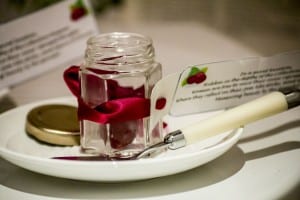 (Taken by Fenia Kotsopoulou)
(Taken by Fenia Kotsopoulou)
We took advantage of the limited space by setting a target of performing to only two audience members at a time. We decided this would take place in three, fifteen minute allocated times, 12:30 to 12:45, 12:45 to 1:00 and 1:00 to 1:15. As part of the performance, I would greet them at the top of the stairs and present them with their ‘spoonful of beauty,’ and to hopefully engage and capture their attention with the theme of our piece before they watched our performance in the bathroom area.
Analysis of Process
First Visit
On the 28th of January, I visited The Collection Museum and Usher Gallery for the first of many trips for my site specific performance. We were allowed to look around the different spaces to gain inspiration as to how we could use them. To try and visualise a place that is not specifically for performing in was challenging but interesting too. I had to stretch my mind to think of what the possibilities could be, but that would still adhere to the strict protocols in place for the safety of the exhibitions and the public.
I was helped greatly after reading Pearson’s introduction and watching John Berger’s ‘Ways of Seeing’ video. Within Pearson’s introduction, Pavis said site specific, “refers to a staging and performance conceived on the basis of a place in the real world” (2010, 7) and through researching and finding a new relationship with it, it can give “the performance an unusual setting of great charm and power.” This gave me a slight insight as to how something new can be made from what already exists. As we are in a gallery, Berger’s ideas helped me understand more about the actual site we are in. He said that our understanding of paintings is based on perception and this creates the appearance of reality. Not only that, but the way in which we see the paintings can alter depending on the context and time in which we see them; our perception is as significant as the picture itself.
First Ideas
After gaining more of an insight as to what a site piece could be and how we view paintings, my group decided to focus on the concept of the male gaze and how the paintings of female nudes in the Gallery are largely by male artists for a male audience. So we started looking at practitioners and pieces of feminist works as inspiration for our idea.
Our first main idea was inspired by Karen Finley. “Her performance work, all self-authored, was mainly centered around the oppression of women and resultant feelings of rage and self-loathing, but also addressed sexual repression, domestic abuse, homosexuality, and other taboo subjects.” (Holmes) Finley uses the mantra from the second wave feminism, ‘the personal is political’ to bring awareness to issues that are usually private; this is something we wanted to inject into our piece too. We wanted to have scripts based on the nudes and our own personal stories to tell to the audience
Mirror, Mirror On The Wall
Focusing on makeup as our key theme, we thought about all the products used to ‘better’ the female image and believed it would be an interesting concept to create a piece of artwork from cosmetics. However, we found that we were, limiting ourselves to an idea and not going further with it. We needed to explore and actually do things rather than talk about more ideas.
Consequently, we went to The Collection and executed certain tasks. We inspected the bathroom at the Usher Gallery and with its long mirror, thought it could be a good performance space. We set ourselves the challenge of staring at ourselves in the mirror for 10 minutes in silence. This was harder than I expected. The slightest noise or disruption would cause me to laugh, as the silent atmosphere, with the tension of knowing that you have to be absolutely silent and focused, was hard to overcome.
The use of the mirror was to show that women spend a great deal of time in front of a mirror because they focus so much on their appearance, “All research to date on body image shows that women are much more critical of their appearance than men.” (Fox, 1997) The appearances of women are judged more than men, “and standards of female beauty are considerably higher and more inflexible.” (Fox, 1997)
This relates back to the female nudes. The idea that these paintings were created for the male gaze (the dominating members of society at the time) still holds somewhat true with today. Women feel under pressure to look good for society and though it can be argued that it can be for themselves too, the theme still remains.
Berry Blush Makeup
Within our next session of exploration we began by focusing on ourselves in the mirror for 10 minutes. Whilst doing this, some women came into the toilets, which provided us with a good opportunity for us to gauge their reaction – they reacted by not reacting. Possibly embarrassed, they ignored us; they did their best to avoid all form of contact. From this, we knew that our performance was disconcerting but we also knew that it was not provoking a reaction that we wanted. To achieve the desired reaction therefore, we knew we needed to frame our performance so people knew that something was happening.
We put into practice our food inspiration from Bobby Baker, crudely squashing raspberries onto the sink and then applying it as lipstick and blusher on our faces. Bobby Baker, “through her use of food in performance she communicates her ‘everyday’ experiences as a wife, mother and artist.” (Lawson, 2009) Using the raspberries, we thought we could achieve a similar message but as young adults challenging views on the conformity of wearing makeup. In all our previous practices of just staring in the mirror, no-one paid much attention to us and mainly ignored us. This time, however, because there was more of a non-conformance action happening, we received some concerned and odd looks from the toilet users. Our actions were enhanced by the stark and bright colour of the raspberries on our cheeks and lips which was impossible to be missed, “Baker has stated ‘food is like my own language’ (Iball 75), and it is a highly visceral, visual language that she uses to communicate” (Lawson, 2009)
What I found interesting about our performance was the idea that if we had been applying ordinary red lipstick and blusher, no one would have cared or noticed it at all. But by using childlike play practices to simulate the adult actions of applying make-up, it drew attention not only to the need of many females to continually use make up to enhance their appearance, but also the inescapable conditioning of young girls by societal norms and media into needing to wear cosmetics too.
‘BEAUTY’ Frame
As discovered in our last exploration, we knew that we needed to frame our piece in order for the audience to know that a performance was happening. We chose to use things around us to keep it relevant to our performance, so toilet paper was a clear choice. Replicating Baker, “pieces often have an element of playfulness, the artist being very hands-on with her materials.” (glowby, 2012), we wanted to encompass that sense of playfulness too, and by sticking the toilet paper on the mirror, we felt like we were little kids breaking the rules and having fun whilst still creating an important visual message. Using the squashed raspberries as a glue to stick the paper to the mirror, spelling out the word ‘BEAUTY’ in large, clear lettering so that it dominated the mirror space and could not be missed.
The reactions we got this time were very positive. Many of the women were intrigued, asking questions and wanting to know what we were doing. The only downside was that we were still trying to perform by focusing on our reflection, but due to the questions being asked, we were unable to fully focus on this. We realised that we hadn’t provided enough information for them to understand our intentions and consequently felt we had to answer and talk about what we were trying to achieve. It was really interesting and exciting to hear the women’s views on what we were doing and definitely felt that we were on the right track as to what we were creating. Based upon the questions and discussions with the women audience, we decided to introduce a performance text to allow for an uninterrupted performance and at the same time give the audience access to a fuller and deeper understanding of our work.
“Woman must write herself”
Our first attempts at writing our text resulted in a magazine sounding piece filled with opinions and some facts rather than an actual performance piece. As a result, we looked at the works of Karen Finley and Helene Cixous to gain inspiration to write an improved one.
Cixous said, “Nearly the entire history of writing is confounded with the history of reason, of which it is at once the effect, the support, and one of the privileged alibis. It has been one with the phallocentric tradition” (Cixous, 1976, 879) For so long language has not been for women and instead has been used by the patriarchy to oppress them. Instead, “Woman must write herself: must write about women and bring women to writing, from which they have been driven away as violently as from their bodies” (Cixous, 1976, 875) She seeks to show that through writing it can bring women to reconnect to their bodies; to express their own personal stories as well as helping other women to explore theirs too.
This was a good foundation for listening to Karen Finley’s work such as, It’s My Body, from a Certain Level of Denial, We felt this piece sounded more like a story, taking us on a journey using her feminist opinions to guide us. Keeping this in mind when rewriting another text, I tried to make it less literal and more of a stimulus that could spark thoughts from those who might listen to it, just as Finley did to me. A quote that gained my interest from her speech was, “No one’s controlling me, no one’s controlling my body, we’ve been raped, we’ve been discriminated against, we’ve been oppressed, we’ve been persecuted, we’ve been controlled. Men are not controlling us any longer.” (JennifuhLeathuh, 2012) Coincidentally, Leanne also found this to be of quality, so we both intertwined it into our own texts as it fit with our own message about women that conform to the masculine ideals of beauty.
Dresses, High Heels And Lipstick
After completing our performance texts, we decided to trial a dress run, to see if all the elements of our performance would fit together and run smoothly. We changed into our costumes, mine being a long dress and cardigan with bare feet and Leanne’s a short white robe with high heels. The thought behind this choice was to show the contradicting aspects of femininity. The short robe indicates sexual prowess and high heels the becoming of an adult woman. The long dress and cardigan however, insinuates moral virtue and bare feet shows a childlike innocent nature.
We repeated the actions that we had done before with the squashing of the raspberries and focusing on our reflection. We then introduced our new performance texts that we took turns to read aloud. While one if us read, the other would write words on the mirror in front of us in red lipstick. The words we wrote were key words that are at the heart of our performance, for example, “Patriarchal,’ ‘Conforming’ and ‘Discrimination.’ After doing this, we then focused on each other and applied the remaining squashed raspberries to the other person’s face, covering them. The reason behind this, was to show that we as women are our own worst enemy at times, and instead of helping one another, sabotage each other instead. We realized after doing this that not only was it hugely humorous to us, and could be portrayed as comedic rather than serious, but it was not the end message we wanted to send out, so we agreed not to include it in our end piece.
Final Touches
In the week running up to our performance, a few changes were made. We decided against writing on the mirror with lipstick; despite it looking aesthetically pleasing, the words were too explicit, making our message too obvious and not allowing the audience to think for themselves. We also knew that everything we were doing needed to be bigger. There needed to be more food, more use of the space and more of a performance when greeting our audience members.
We decided on more raspberries to cover the sink, rather than a little pile, which would make it more visually effective. The wearing of Jammy Dodgers as nipples represented the over sexualisation of women and the pouring of jam into Leanne’s shoes displayed the discomfort women have of wearing high heels for image sake. To incorporate the remaining space, we wallpapered the middle cubicle with etiquette and recipe pages, showing links to the stereotypical nature and often conflicting roles that women are placed under, being sexually attractive, pure and innocent, as well as mothers and wives. Our shoes were then placed under the doors of the other two cubicles on either side, to give both a slightly comedic effect and create the idea that there were more women in the toilets, listening to what we were saying. Also, when we greeted our audience members, we wanted to give them their very own spoonful of beauty, so handed them a teaspoon with a raspberry on it and ask them to follow us to our performance space. By doing this, it involved them in their learning journey from the start.
(4 photos above taken by Fenia Kotsopoulou)
Evaluation of Performance
After many months of hard work, we presented our performance without any major problems. By carefully scrutinising our rehearsal performances, we developed greater precision and focus, enabling us to achieve a final performance that met our initial objectives and went further in delivering additional feminist messages.
For the first two sections of the time slots, we had a shorter version and for the last time frame, a longer one for our examiners. The shorter versions included: the greeting and journey down the stairs; the performance text being performed; applying some of the squashed raspberries onto our faces; then asking the audience to collect their jar from the toilet cubicle and leave. The main reasoning for construction of shorter version was time based – that the mess created from the longer version would take too long to clean up in time for the next session.
Our first performance was a success with the only problems faced due to more to external factors than anything else. Firstly, the audience member failed to see our direction signs,had entered using a different way and so was already outside the toilet door instead of waiting at the top of the stairs. This however was easily rectified and we simply asked her to go back and wait. Another problem was that another performance was happening in the adjacent toilet which was unbeknown to us. This resulted in an interruption during the end of our performance to ask if we were performing. They soon apologised once they realised the situation but it made us realise that correct positioning and accurate signing was clearly an issue that needed rectifying for next time.
An additional problem relating to signing was that during preparation of our space for our first performance, two members of staff, as well as a mother and child entered the space. We were slightly bewildered by the mother and child entering as we had been told that the area was off-limits to the public, and also by the staff entering, as our performance in progress signs we felt were clearly positioned. We realised that adjustments were needed so subsequently moved the sign from inside the toilets to the outer door of the general bathroom area which would then notify anyone else who attempted to enter.
Unfortunately for our second time slot there were no audience members to watch us, however, this did not impede us from breaking our focus. I waited at the top of the stairs until our third and final performance started. For this performance, I felt our text was delivered well and the silence when staring was intense. To improve this performance, our exit could have been slightly smoother, with some profound exit words to leave the audience with.
I feel that in response to the nude paintings we created a performance to be proud of. While it could be argued that our performance could have been in any toilet area, it would not have had exactly the same impact. Our choice reflected our aim to provide a counterbalance to the male created paintings and for this reason the site needed to be within the Usher Gallery. In addition, we were able to use the fact that the toilets were in the basement of the gallery to make the journey a part of creating this intimate and secret place whereby women’s voices could finally be heard.
Bibliography
– Cixous. H (1976) The Laugh of the Medusa [Online] Chicago Journals.1 (4)
Available from: http://www.dwrl.utexas.edu/~davis/crs/e321/Cixous-Laugh.pdf [Accessed: 24th April]
– Fox. K (1997) Mirror, mirror – A summary of research findings on body image [Online] http://www.sirc.org/publik/mirror.html [Accessed: 22nd March]
– glowby (2012) Bobby Bakers’ Edible Performance Art 2012 [Online] Available from: https://glowbey.wordpress.com/2012/05/13/bobby-bakers-edible-performance-art/ [Accessesed: 6th April 2015]
– Holmes. L. Progress Through Provocations: Analyzing the Work of Karen Finley. [Online] Available from: http://cujah.org/past-volumes/volume-iii/essay-3-volume-3/ [Accessed: 1st March 2015]
– JennifuhLeathuh (2012) Karen Finley: It’s My Body, from A Certain Level of Denial [Online] Available from: https://www.youtube.com/watch?v=HUxKEtCcdVo [Accessed: 24th April]
– Lawson. J (2009) Food Confessions: Disclosing the Self through the Performance of Food [Online] MC Journal. 12 (5) Available from: http://journal.media-culture.org.au/index.php/mcjournal/article/viewArticle/199 [Accessed 1st April2015 ]
– Pearson. M (2010) Site Specific Performance. Basingstone: Palgrave Macmillan
Rich. A (2013) Translations ms. informed [Online] 24th September Available from: Ahttps://vassarwomenscenter.wordpress.com/2013/09/24/adrienne-rich/ [Accessed: 5th May 2015]
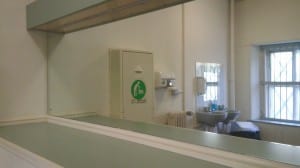
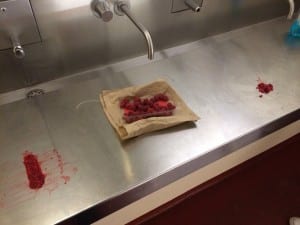
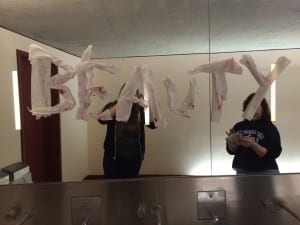
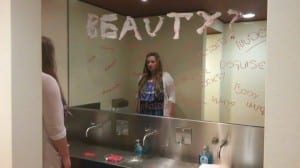
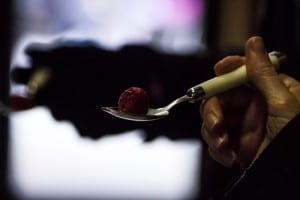
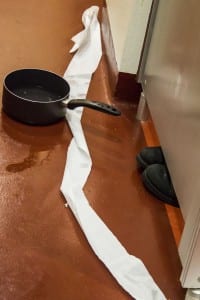
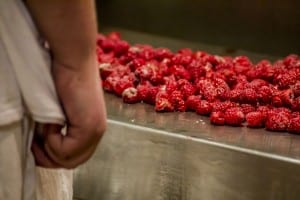
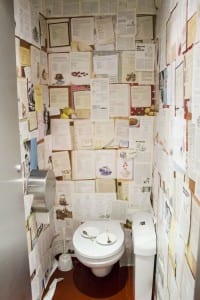
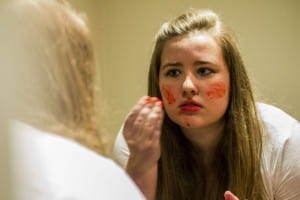
Recent Comments